If you listen to your own still body long and intently enough, you can hear the roar of your own blood — somewhere in your fingertips or an artery in the back of your head, perhaps in a bent limb. In the same way, you can suddenly recognize your voice in the din of war, and be surprised at how unexpectedly different it sounds. Probably not the way you knew yourself before. Just as you cannot always hear the roar of your blood moving through your body, you cannot always distinguish your voice in the din of war — because you are one. You’re the ones the war is moving through, you are its path and your emotions are its infrastructures.
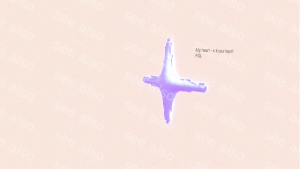
Still from “See also: a set of compressed images and feelings”
In the fall of 2022, we came across an old Ukrainian television lullaby that was shown every night before a children’s fairy tale on the first channel of national television in the 1990s. In the opening animation, the sun is rapidly rising on the tail of a sleeping cow, the cow wakes up and runs across the sky, all the animals and children go to sleep, the animal’s horns turn into the moon, night falls, the cow disappears in the darkness, turning into stars.
One friend with whom we shared this video recalled that as a child she always cried when she saw this lullaby because the cat falling asleep in the animation seemed to her to be dying. We both found this animation disturbing, despite the cute and friendly images of animals getting ready for sleep. Perhaps it was also the song that accompanied the animation. It seems that no one was able to understand its lyrics in childhood. Hastily found on the Internet at the end of 2022, the lyrics seemed to be evidence of an inevitable existential horror. As it turned out, a high-pitched female voice was tearfully begging the sun not to set, because without it becomes scary and dark.
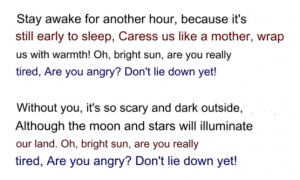
Poem: A Quiet Evening, author Volodymyr Samijlenko

Stills from the “Good night, children” TV program, UT-1 channel, Ukraine
We talked more and more about this lullaby, and what seemed so familiar to us about the current military routine. Perhaps the lullaby resonated with the Ukrainian blackouts of winter 2022 due to the Russian shelling of critical infrastructure, and perhaps there was more to it than that.
One way or another, the melody of this TV lullaby and the soundscapes of Uzhhorod, where we lived at the time, formed the 11-minute soundtrack for the see also project that we worked on in the fall and winter of 2022-2023 in the framework of Transmediale x Pro Helvetia residency. Although the lullaby is no longer distinguishable in the track, it has become an important piece for the feeling of the whole project. Because cyberwar, like the soundtrack, comes from everywhere at the same time, unfolds quickly, and suddenly becomes rhythmic, then breaks up into roars and hisses again. And we, lulled into it, resist total forgetting with all our might.

Stills from the “Good Night, Children” TV program, UT-1 channel, Ukraine
The full title of our project is “See Also: a Set of Compressed Images and Feelings”, which unmistakably refers to the research of images of war. The project is an interactive archive of images of Russia’s full-scale invasion of Ukraine. However, we focused only on the distorted images: overexposed, pixelated, blurred and compressed. These were the images that were most frequently posted on Ukrainian social media accounts and Telegram channels in the first year of the full-scale invasion. And despite their formal lack of information, we believe they are still the best visualization of life during a cyberwar, where all possible registers of perception — human and non — have been fully compromised.
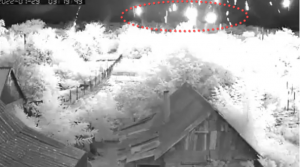
Full-scale invasion of Ukraine, found footage
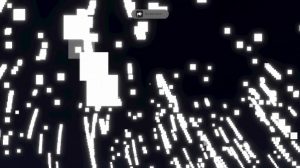
Still from the See Also
Here when we talk about the overexposed images of phosphor bombing, we find ourselves again and again in this compulsion to forget. Each overexposed image of war is a bright sprawling spots of scorched pixels that spread before your eyes, and make you think of the people, animals, plants, and infrastructures destroyed. Such images document this destruction literally, as the sites of the overexposure contain no data. This is expanding, and swallows up all living and non-living things, today and long after. “Imperialism, including Russian imperialism, operates through erasure,” writes Ukrainian researcher Darya Tsymbalyuk in her text. She defines it as “a systematic and intentional destruction of people’s lives and everything and everyone that constitutes these lives, including multispecies relations and languages.”
This operation of erasure or overexposure can be unpacked into hundreds of micro-processes by looking closely at the methods and tactics of the occupiers. What is the immediate replacement of any non-Russian-language topographic signs by Russians in the newly occupied territories, if not the erasure? Isn’t it a policy of total overexposure to conduct massive attacks on people, land, forests, and water bodies? Is it not a compulsion to forget yourself during the initiation of such a brutal war that, to counteract it, thousands are forced to put themselves aside indefinitely to establish the production of collectivity?
Video produced by fantastic little splash, based on real and simulated digital artifacts of the war images, based on the poem: Confusion (from Suite of the Mirrors) – by Federico García Lorca, translation: José Angel Araguz
The more we looked at these distorted images, the more we realized that they are also accurate visualizations of the emotional experience of living through modern warfare.
Our bodies are no longer only needed on the battlefields directly, but also remotely – to produce and conduct emotional contagion. Every day, we broadcast evidence of war crimes to demand affective labour from the spectators of war, and the corresponding real political reactions as a result. Thus, SMM turned into a Suffering Media Management, images became semi-operational, extractivism – emotional, diplomacy – affective. Such militarized online targeting became possible due to previously optimized commercial ones on digital platforms.
“Cyberwar […] is fundamentally a process of machinic mobilization, in which humans increasingly play the role of relays within processes whose speed and complexity are deeply inhuman, or at least a human. The subjects of cyberwar are thus ultimately not so much humans as they are machine networks to which humans are the most easily compromised point of access,” Nick Dyer-Witheford and Svitlana Matviyenko write in “Cyberwar and Revolution”.
So, isn`t the cyberwar lulling – with all those cruel flashes, loud sounds, frequent distortions? In the see also project, going through those images, we alternately address the processing of our own emotions and the effects of digital platform policies. That’s how we are trying to detect places potentially susceptible to (self)automation: forced or not. During the war, and especially cyberwar, forgetting yourself is inevitable, but this way we hope to find the methods to do it as little as possible.
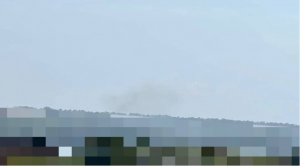
Full-scale invasion of Ukraine, found footage
(an earlier version of the text was published in Lithuanian for the Paveldo Institutas issue of artnews.lt)
—
fantastic little splash is a collective comprised of journalist/artist Lera Malchenko and artist/director Oleksandr Hants. fantastic little splash combines art practice and media studies to research collective imagination and emotional appropriation in technosocial systems. The group works with videos, texts and interactive game-based tools. Established in 2016 in Ukraine, their projects have been exhibited at events including Transmediale, post MoMA, Plokta TV, Ars Electronica, Liste Art Fair Basel, Construction Festival VI x CYNETART, KISFF, and Docudays, among others. fantastic little splash – participants of the Transmediale x Pro Helvetia Residency 2022, and the Cité internationale des arts residency 2023.


